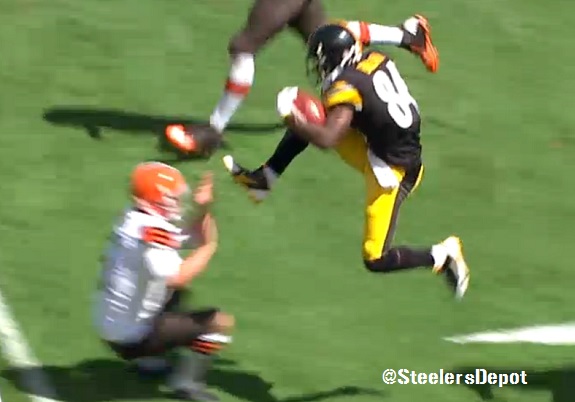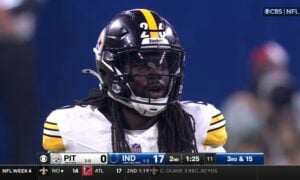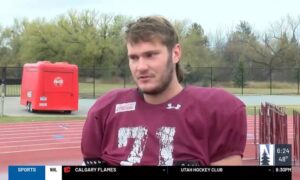The Pittsburgh Steelers are aiming for a new face on punt returns, taking Antonio Brown out of that role. Obvious front runners are Demarcus Ayers and Eli Rogers.
But maybe the Steelers should keep aiming. A little bit farther.
Keep going.
All the way until you come full circle. Back to where we started. With Antonio Brown. He should be the team’s punt returner and there isn’t a good reason to deny that.
There are a couple layers to this argument, some I’ve already pointed out in writing or on Friday’s The Terrible Podcast.
Largely, the only opposing point to come up is over the injury risk Brown has by being the punt returner. And to be clear, that is true. Obviously so. The more snaps you take, the more plays you’re allowed to make, the greater the risk there is for injury. There’s always that chance. That fear.
But since when does Mike Tomlin lives in his fears?
Listen to him talk and you’ll know he never does. Or at least, never admits it.
Fear seems to be the catalyst for this desire. Fear over that injury. But what is the actual risk? Has Brown been susceptible to bone crunching hits? Or is it mostly theory? That chance, that fear.
I went back and looked at all 22 of Brown’s punt returns from 2015 to gauge how he was tackled. On paper, it does make sense that he could be dealt a larger blow on special teams than offense, a swarm of 10 players running at full speed with the intention of breaking him in two. But in reality, did that happen?
Here are the results of my charting with some analysis to follow.
Total Returns: 22
Normal Tackles (tackled about as hard as he would be on offense): 10 – 45.5%
Stayed On Feet (pushed/ran out of bounds or scored): 7 – 31.8%
Gave Self Up, Soft Tackles: 3 – 13.6%
Violent Collisions (at first glance, ones that look like they could injure): 2 – 9.1%
Brown does a tremendous job of avoiding big collisions. He’s elusive, shows terrific body control, and is a smart player who isn’t afraid to just quit on the play. Six times, Brown ducked out of bounds. And he avoided some potentially bone-jarring collisions, showing the ability to contort his body and settle for glancing blows. This play against San Diego is my favorite example of that.
The linebacker #52, has Brown lined up. Ready to explode and run through the tackle. Brown sees him at the last moment, shimmies to his left, causing the linebacker to miss, and settles for a softer hit. And if you look closely, he’s able to duck his head and anticipate the blow further lessening the contact.
Rarely was Brown taken down any harder than he would be as a receiver. I could only find two examples of what I would call a “violent” collision. This clip also comes from the Chargers’ game.
That’s scary but it’s also rare. Based on last year’s sampling, it’s far more likely Brown will waltz out of bounds or just take himself to the ground. I imagine the same holds true for the other seasons, especially the past few years, when Brown has become smarter about when to be aggressive and when, like Franco Harris, to run out of harm’s way.
His lack of aggression is also true for his judgment. He isn’t Pacman Jones. Brown fair catches all the time and again, avoids unnecessary pain to his body.
I’m not certain about this fact but as far back as I can tell, the last Steeler injured on a punt return may have been Hank Poteat in 2002. That is, at minimum, an injury-less streak of 469 returns. An injury percentage of .2%. If there was a city with that crime rate, we’d all move there. If 469 was the number of days Walmart went without an accident, there’d be a big sign exclaiming that at checkout. Super low percentage.
While Ayers and Rogers could perform well in the preseason, there’s a zero percent chance they will be thought of as a talented or more trusted option than Brown. Brown is one of the top returners in the game. At best, those two will be first-year players with a nice preseason resume and a complete unknown when it comes to games that matter.
I am not risking the very real possibility of a new face struggling (see Jones, Jacoby) over the much smaller possibility that Brown will get hurt.
Ask a player and they’ll tell you run a higher risk of injury when you play scared, play tentative.
Tomlin’s fear has the same metaphorical effect. It can only hurt the team, not help.










